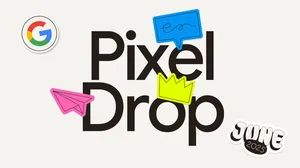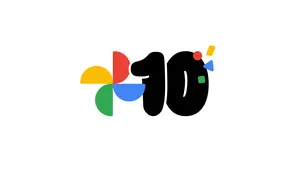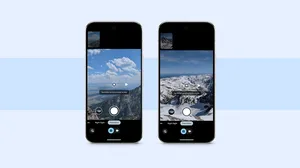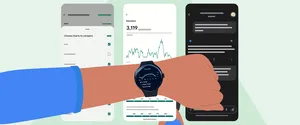4 tips on getting the most out of Pixel 8 Pro’s Video Boost
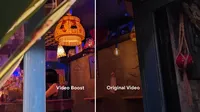
Kevin Fu and Fuhao Shi remember one of the first videos that made them realize the power of Pixel 8 Pro’s Video Boost technology. “I filmed a demo video early on when we were working on Video Boost,” Fuhao says. “It was super dark; you couldn’t make out any detail.” Then, they applied Video Boost, a camera feature on Pixel 8 Pro that makes videos higher quality with better lighting, finer details and richer colors. Suddenly they could see a red car parked on the street, homes in the background and details of the road — all previously obscured in the dark. “It was one of those ‘wow!’ moments,” Kevin says.
Kevin and Fuhao are part of the team that has brought Video Boost to life; Kevin is a product manager and Fuhao is a senior software engineer, both for Pixel Camera. “We want to give people the best video quality possible,” Kevin says.
To do this, the team developed a feature that relies on multiple technologies to improve video quality. For better lighting, Video Boost uses HDR+ with Night Sight (a process that pulls in a large range of dark to bright lighting data). Video Boost also uses machine learning techniques that stabilize each frame and reduce motion blur so the end result is ultra sharp.
To use Video Boost, you simply select the option from your camera settings and record your video. Right after you record the video, you will have an initial video that is immediately available on your Pixel. Your phone will also send a second temporary video to the cloud for processing (boosting). You'll get a message once your boosted video is ready.
All of this is possible thanks to what Kevin and Fuhao describe as the powerful duo of cloud computing and on-device processing, powered by the Pixel 8 Pro’s Tensor G3 chip. “That’s the beauty of what we can do here,” Kevin says. “The process starts on the device, and then transfers to the cloud — and that’s where we can do a lot of optimizations that we couldn’t do on the device alone.”
Below, Kevin and Fuhao share more about how Video Boost works as well as these four tips for using it.
1. Don’t be afraid to shoot in dark, dim settings
Shooting videos at night or in other dark settings on your phone can be tough because of hardware and software limitations. “Smartphone camera sensors are generally smaller compared to traditional DSLRs and mirrorless cameras, so it’s hard for them to capture enough light. And from a computational perspective, it becomes difficult to run the best algorithms to upgrade the video quality,” Kevin says. “It’s easier with photos because that’s just one image to produce, but videos are typically shooting in 30 frames per second, so there are a lot of images for the algorithms to process.” This is why, oftentimes, videos shot by phones in dim settings are grainy, dark, blurry or all of the above.
Video Boost, however, delivers incredibly well-lit, bright, crisp videos — thanks to the aforementioned tech as well as its new sensor. “In low light, the visual noise levels are much better,” Fuhao says. It can even result in a big reveal: “A lot of people will record something in a dark area and they won’t really be able to even see anything they shot,” Kevin says. “Then they use Video Boost on it and when they get the results, they’re so excited when suddenly so much more is visible.”
Above is a still from the early demo video Fuhao and Kevin described. On the left is a still from the video without Video Boost; the one on the right is with Video Boost.

2. Speed up the process with Wi-Fi and auto-backup
You’ll need a Google Photos account in order to use Video Boost — this is what will upload your video to the cloud in order to "boost" it. Kevin suggests turning on Google Photos’ backup so the process of uploading your video to the cloud will begin automatically, in accordance to your backup settings such as a preference to upload on Wi-Fi-only.
And don't worry too much about these video files taking up too much of your storage. "The 'boosted' video is only slightly larger than any regular 4K or 1080p video with a better bitrate — which basically means the image quality will be better," says Fuhao.
If you're still worried about file size, there are lots of Pixel tools to help you make sure you're efficiently using your storage — for example Pixel’s Smart Storage feature, which surfaces files, apps and more things you might not need that are taking up room on your phone.
3. Select settings based on how you want to watch
Video Boosted videos are so good you might even want to take them to the big screen. Video Boost automatically records in 4K, so it’s TV-ready — but if you feel like you won’t need all those extra pixels and want to save on processing time and storage space, you have the option to navigate to Video Settings (you’ll find them by tapping the gear icon once you’re in video mode) and opt to use Full HD resolution instead.
Also in Video Settings, you can choose to turn on 10-bit HDR to add extra pop to your videos and make colors even brighter and more vibrant. “This is another setting that will look great if you’re viewing the videos on high-end displays,” Kevin says. Video Boost doesn’t only have visual settings you can play with — there’s also speech enhancement, so the audio focuses on the dialogue of a video.
4. Choose what and when you want to share videos
Because Video Boost needs some time to work on your video, you can’t share the “boosted” video right away — but because of its hybrid on-device plus cloud processing system, you have the option to share the initial video as soon as you like. And Pixel’s on-device video technology means this is still great quality. “There are lots of real-time features like Live HDR+ and video stabilization that are already at work before the file goes to the cloud,” Fuhao says. So if you want to share something online or with a friend right away, you can. But if you want the more polished version that’s being processed in the cloud, you can choose to wait a bit. “It sort of depends on what kind of internet creator you are,” Kevin says. “Do you want to get something on social media or send it to a friend right away, or would you rather create a more curated presentation?” Or, of course, you don’t have to decide — share both! You’re the one in the director’s chair, after all.



